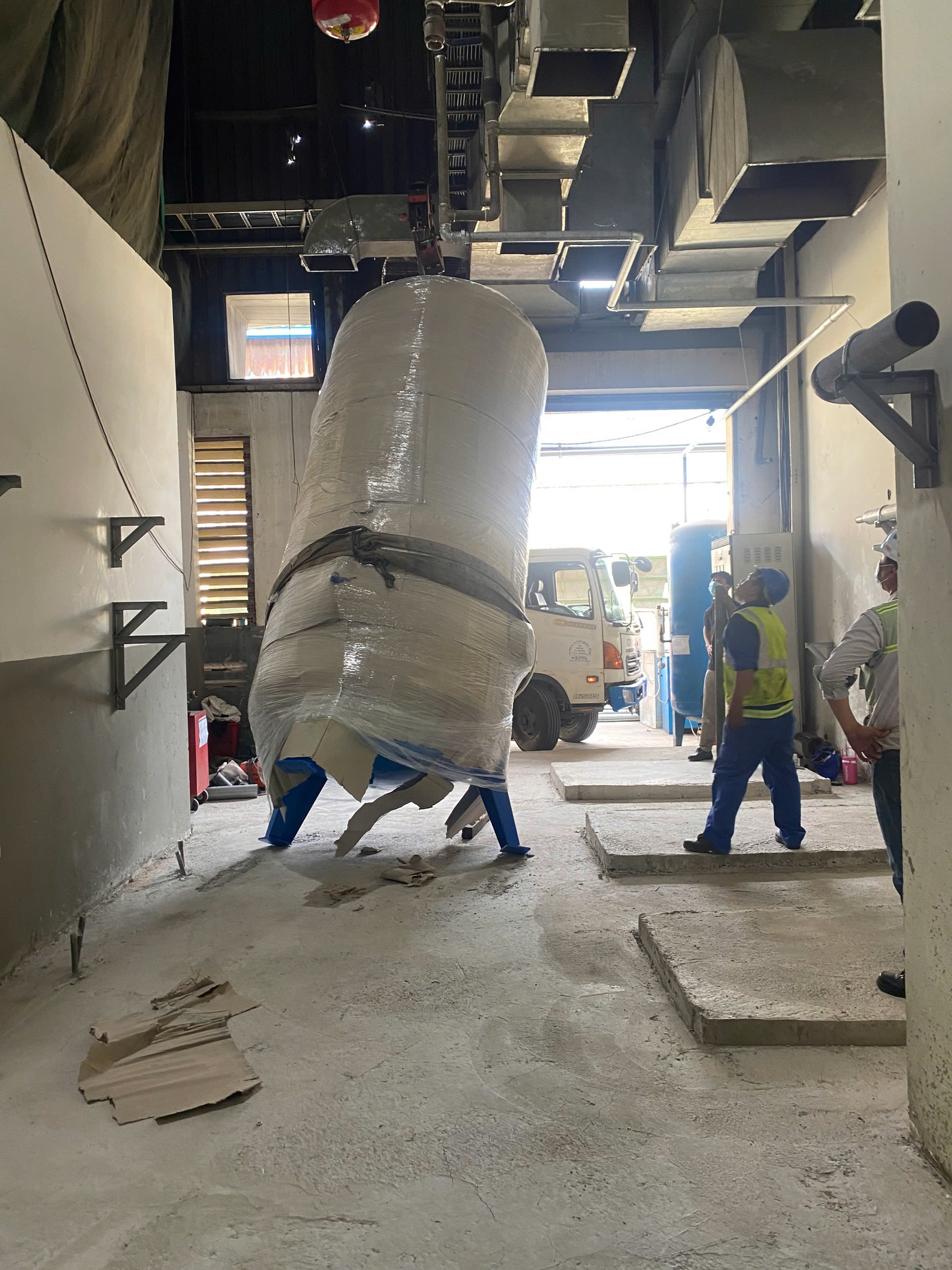ISO 8573-1:2010 Standard for Compressed Air Purity and Food Applications

Compressed air is a vital energy source widely used across all industries, from operating machinery to direct product contact. Especially in the Food and Beverage (F&B) industry, the purity of compressed air is a crucial factor determining the quality and safety of the final product. The international standard ISO 8573-1:2010 is the single most important benchmark for determining the purity level of compressed air.
1. What is ISO 8573-1:2010?
ISO 8573-1:2010 is the international standard that specifies compressed air purity classes, defining the maximum concentration of three main contaminants: Solid Particulates, Water, and Oil (liquid and vapor forms).
This standard uses a three-digit classification system to define the purity of compressed air: [Solid Particulates] : [Water] : [Oil]
Example: Compressed air rated Class 1.4.1 means: Class 1 for Solid Particulates, Class 4 for Water, and Class 1 for Oil. The smaller the class number, the cleaner the compressed air.
2. Classification of Compressed Air Purity (ISO 8573-1:2010)
2.1. Solid Particulates - First Digit
This classification is based on the quantity of solid particles by size (µm) in one cubic meter of compressed air.
| Class | Maximum Particle Size (µm) |
|---|---|
| Class 1 | No more than 20,000 particles 0.1-0.5 µm; No more than 400 particles 0.5-1 µm; 0 particles > 1 µm |
| Class 2 | No more than 400,000 particles 0.1-5 µm; No more than 6,000 particles 5-40 µm |
2.2. Water - Second Digit
Classified based on the Pressure Dew Point (PDP) or liquid water content. The lower the dew point, the drier the compressed air.
| Class | Pressure Dew Point (PDP) |
|---|---|
| Class 1 | -70°C PDP |
| Class 2 | -40°C PDP |
| Class 4 | +3°C PDP (Commonly used for Refrigerant dryers) |
2.3. Oil (Total Oil Content) - Third Digit
This standard includes liquid oil, aerosols, and oil vapor.
| Class | Maximum Total Oil Content (mg/m³) |
|---|---|
| Class 1 | 0.01 mg/m³ |
| Class 0 | Oil content is specified by the user/process requirements, often 0.001 mg/m³ or lower. |
3. Strict Applications in the Food and Beverage Industry
In the F&B industry, compressed air is generally categorized into two main types, each with different ISO requirements:
3.1. Direct Product Contact Compressed Air
This is air used for direct blowing, spraying onto food, or contacting packaging containing food (e.g., bottle blow molding, conveying powder ingredients, rapid cooling). The requirement for this type of air is extremely stringent:
- Minimum Standard: Typically ISO 8573-1:2010 Class 1.2.1 or higher.
- Oil-Free Air: Mandatory use of Oil-Free Air Compressors to meet Class 1 or Class 0 for Oil.
- High Dryness: Requires an Adsorption Dryer (Desiccant Dryer) to achieve low dew points (usually Class 2: -40°C PDP, or Class 1: -70°C PDP) to prevent the growth of bacteria and mold.
3.2. Non-Contact Compressed Air
Air used to operate valves, cylinders, external packaging machines, or automation equipment without the potential for product contact. Requirements may be lower but stability is still needed:
- Minimum Standard: Typically ISO 8573-1:2010 Class 1.4.1 or 1.4.2.
- Treatment Equipment: Requires a Particulate Filter and a Refrigerant Dryer to achieve a dew point of +3°C PDP (Class 4).
4. Solutions to Achieve High Standards
To achieve high classes (such as 1.2.1), a synchronized compressed air treatment system is necessary:
- Oil-Free Compressor: The first step to completely eliminate oil contamination.
- Adsorption Dryer (Desiccant Dryer): To achieve low PDP (-40°C or -70°C).
- Fine Filtration System: Includes oil separation filter (if using lubricated compressor), Activated Carbon Filter and Sterile Filter to remove solid particles and oil vapor.
Quoc Thinh Industrial specializes in consulting and providing oil-free compressed air solutions and specialized treatment systems, helping your F&B business easily meet the most stringent ISO 8573-1:2010 standards.

 VN
VN
 EN
EN





